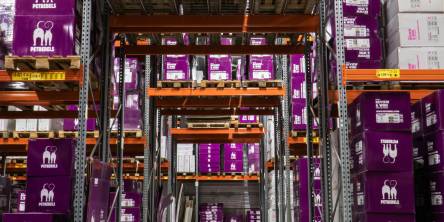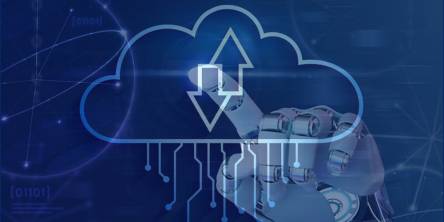Top Strategies for Risk Mitigation in Supply Chain

In today's global marketplace, supply chains have become increasingly complex, with businesses relying on suppliers worldwide to deliver products and services to their customers. While this has opened new growth opportunities, it has created unknown risks and challenges. Disruptions in the supply chain can significantly impact a business's operations, reputation, and bottom line. Risk mitigation is an essential aspect of supply chain management that helps to reduce the negative impact of unforeseen events or disruptions that can affect the flow of goods and services. Today's globalized and interconnected world is making supply chains more complex while making it crucial to identify and address potential risks proactively.
Effective risk mitigation strategies can help companies to maintain a competitive edge by minimizing the impact of supply chain disruptions. One of the key ways to mitigate supply chain risk is to diversify suppliers and geographies. Relying on a single supplier or region can be risky, as any disruption in that area can impact the entire supply chain. By working with multiple suppliers and diversifying geographies, companies can reduce their dependence on any single source and minimize the risk of disruption.
Explore the top supply chain risk mitigation strategies for 2023, including building resiliency, diversifying suppliers, leveraging technology, and implementing contingency plans. By adopting these strategies, businesses can better protect themselves from supply chain disruptions and ensure continued success.
Here are some Supply Chain Risk Management Strategies that will come in handy for Companies in 2023:
- Analyze Risk Exposure: The first step towards risk mitigation in supply chain management is to analyze the company's risks. It involves identifying potential risks such as supplier bankruptcy, natural disasters, geopolitical risks, and cyber threats. Companies can use a risk matrix to assess the probability and impact of these risks on their supply chain operations.
- Evaluate and Prioritize Potential Risks: Once the risks have been identified, the next step is to evaluate and prioritize them based on their potential impact on the supply chain. Companies need to consider factors such as the likelihood of the risk occurring, the severity of its impact, and the level of control they have over it. By prioritizing risks, companies can focus their risk mitigation efforts on the most critical areas.
- Set up a Diversified Collection of Suppliers: One of the most effective ways to mitigate supply chain risk is to set up a diversified collection of suppliers. Relying on a single supplier can be risky, as any disruption in that area can impact the entire supply chain. By working with multiple suppliers, companies can reduce their dependence on any single source and minimize the risk of disruption.
- Periodic Risk Review: Periodic risk reviews are crucial for effective risk mitigation in supply chain management. It involves regular inspections of the company's supply chain operations to identify potential risks and evaluate the effectiveness of existing risk mitigation strategies. Companies can stay current with threats by conducting periodic risk reviews and adjusting their risk mitigation strategies accordingly.
- Establish Effective Communication and Collaboration: Effective communication and collaboration with suppliers is another essential strategy for risk mitigation in supply chain management. It involves building strong relationships with suppliers, sharing information about potential risks, and working together to mitigate them before they become significant issues. By establishing effective communication and collaboration with suppliers, companies can identify potential risks early and work together to find solutions.
Global supply chain risk management strategies are crucial for businesses looking to mitigate the impact of unforeseen disruptions. By analyzing risks, prioritizing them, diversifying suppliers, conducting periodic reviews, fostering collaboration, and using technology, companies can safeguard their supply chains and maintain business continuity.
Similar Articles
For modern businesses to thrive, ensuring the effective management of inventory stands has become vitally important. Inventory management stands as a cornerstone of success. And the emergence of the Internet of Things (IoT) has introduced a new era of connectivity and efficiency across diverse industries.
Do you know what the following e-commerce companies have in common: Amazon, Walmart, eBay, and more? All of these e-commerce companies' apps make use of Java. Java is decidedly among the leading choices of programming language for e-commerce applications because it offers a world of benefits; for example, since Java code can be run on any platform with a Java Virtual Machine (JVM), users of e-commerce apps made with Java can access the said apps on a variety of devices.
Nikola Tesla in 1926, once described what is now called a mobile phone as a telephone that can fit into one's “vest pocket.” As otherworldly as that idea was then, nearly a century later, the reality is even more astounding.
Given the staggeringly high amounts of data being generated worldwide every single day, it ought to come as no surprise that organizations often struggle to pick the right tools to help them effectively harness the potential of all their data.
Managing properties can be a difficult task with the right tools. Property owners must find and use the best property management software. It can be a long and tedious process as there are many options in the property management software market.
In the ever-evolving financial services landscape, industry challenges are numerous and complex. From stringent regulations to rapidly advancing technology and changing consumer expectations, financial institutions face many obstacles.
The human learning capability is a great resource for helping technology evolve and grow, breaking boundaries, and creating new ones. Emulating the ability of humans to learn at a gradual but retentive pace, Machine Learning is the latest power monster that is redefining human-machine interaction.
In the ever-evolving landscape of low-code development, Microsoft's Power Platform stands out as a powerful tool for building custom applications. In today's dynamic digital landscape, creating and managing web pages is no longer the exclusive realm of professional web developers
In the data-driven business world, where information is of utmost priority, organizations are increasingly turning to data warehousing and data marts to harness the power of their data. These data management solutions are pivotal in transforming raw data into actionable insights.









